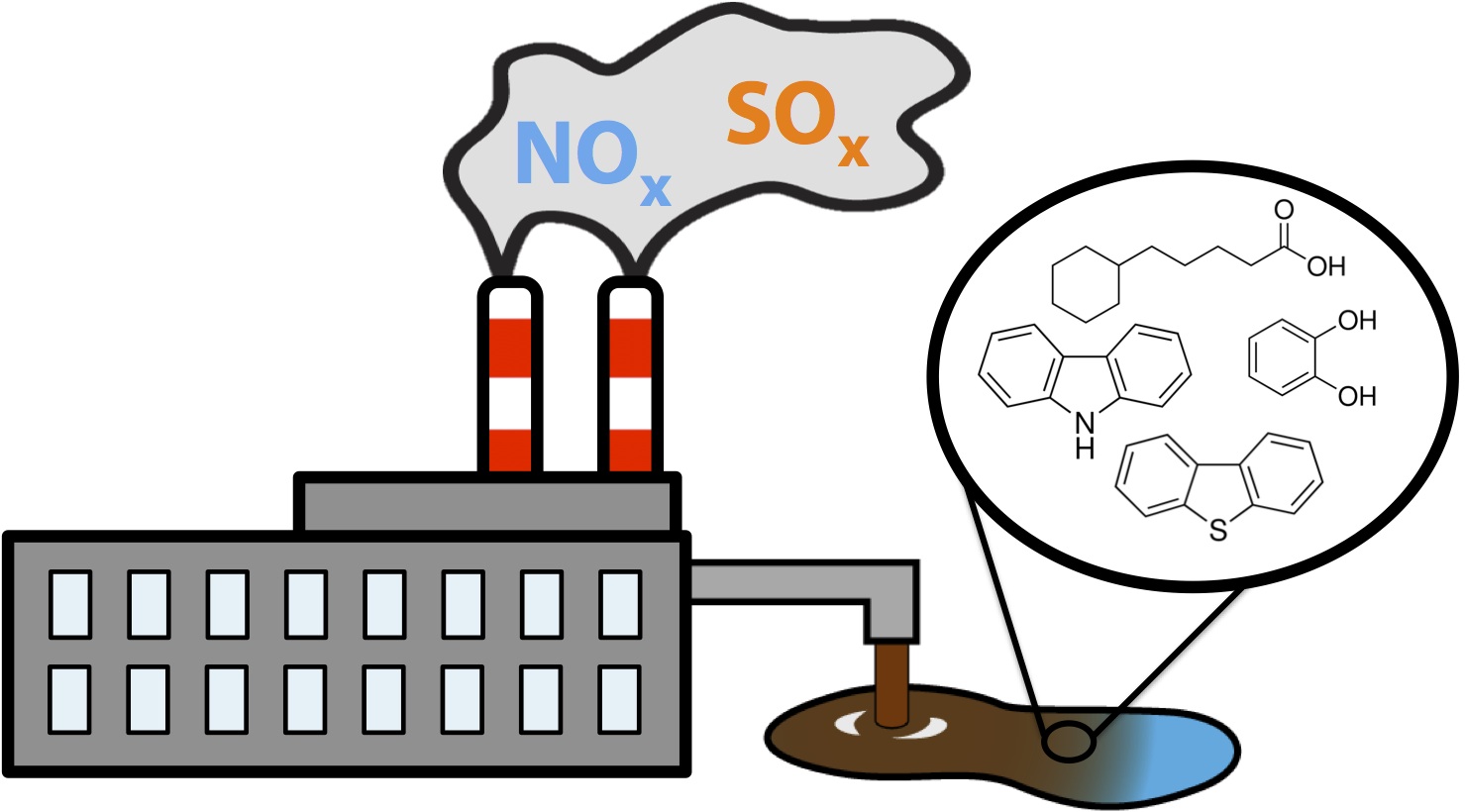Team:Calgary/Project
From 2012.igem.org
Rpgguardian (Talk | contribs) |
Rpgguardian (Talk | contribs) |
||
| Line 4: | Line 4: | ||
<div align="justify"> | <div align="justify"> | ||
| - | <p> | + | <p>During the production of oil, gas, and many other natural products there is the production of numerous toxic components. These have become a huge problem in our society resulting in land, water, and air contamination. These consist of a variety different types of compounds. Air contaminants consist of NO<sub>x</sub> (nitrogen containing compounds) and SO<sub>x</sub> (sulfur containing compounds) which contribute to a variety of environmental issues including green house gas accumulation and acid rain. Similarly water contaminants often consist of complex mixtures of compounds including highly toxic phenols and aromatic compounds, corrosive and additionally toxic carboxylic acid containing compounds, sulfur, and nitrogen containing compounds. These often have complicated structures and demonstrate acute toxicity to wild life. Classical examples of water contamination include tailing ponds produced from the oil extraction process. Finally, land areas can become contaminated as a result of these toxic compounds leaching into ground water sources, spills or accidental release of waste products into the environment, and other ways. |
| - | </html>[[Image:Calgary_EnviroToxins.jpg|thumb|600px|center| | + | |
| + | </html>[[Image:Calgary_EnviroToxins.jpg|thumb|600px|center|Figure 1: Environmental toxins contaminate air, water, and land masses. These can consist of various compounds which could be divided into sulfur, nitrogen, carboxylic acid, and phenolic based compounds. What can we do to solve this problem?]]<html> | ||
</html> | </html> | ||
}} | }} | ||
Revision as of 07:44, 2 October 2012


Hello! iGEM Calgary's wiki functions best with Javascript enabled, especially for mobile devices. We recommend that you enable Javascript on your device for the best wiki-viewing experience. Thanks!
Project Overview
During the production of oil, gas, and many other natural products there is the production of numerous toxic components. These have become a huge problem in our society resulting in land, water, and air contamination. These consist of a variety different types of compounds. Air contaminants consist of NOx (nitrogen containing compounds) and SOx (sulfur containing compounds) which contribute to a variety of environmental issues including green house gas accumulation and acid rain. Similarly water contaminants often consist of complex mixtures of compounds including highly toxic phenols and aromatic compounds, corrosive and additionally toxic carboxylic acid containing compounds, sulfur, and nitrogen containing compounds. These often have complicated structures and demonstrate acute toxicity to wild life. Classical examples of water contamination include tailing ponds produced from the oil extraction process. Finally, land areas can become contaminated as a result of these toxic compounds leaching into ground water sources, spills or accidental release of waste products into the environment, and other ways.
 "
"
